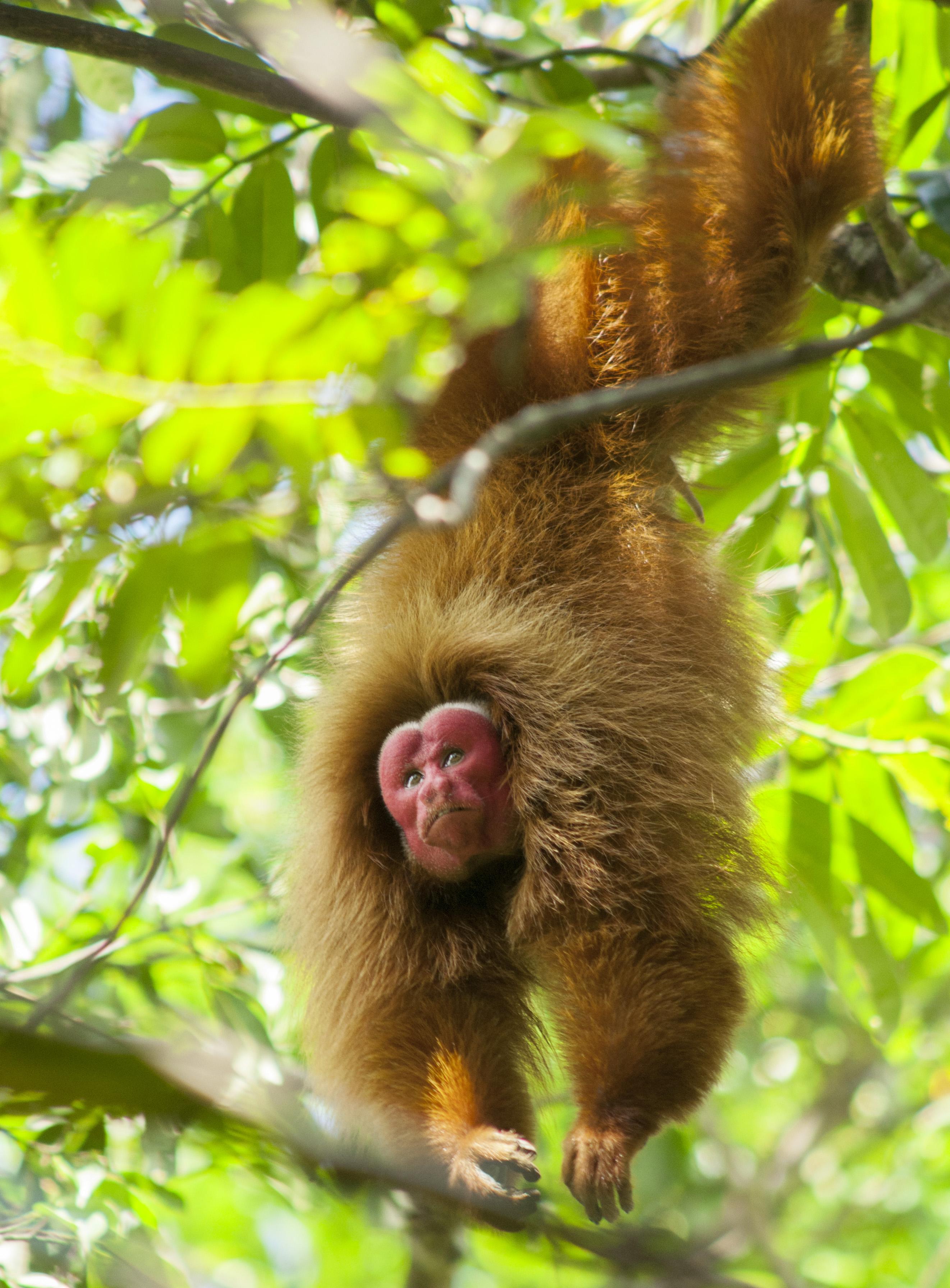
We are interested in adaptive explanations for the high diversity of colour vision within and between primate species.
We recently found that the bald uakari (above) has the highest intraspecific variation in colour vision of any wild primate (Corso et al. 2016). Like most other New World monkeys, male bald uakaris are red-green colourblind (dichromat) where many females are trichromats. This variation has a simple genetic basis, due to a single polymorphic photopigment (opsin) locus on the X chromosome. The presence of 5 or possibly 6 functional X-linked opsin alleles in uakaris means that a higher proportion of females will be trichromatic. We propose that trichromatic females are better at distinguishing healthy males via the redness of their heads. In support of this idea, uakaris have the highest prevalence of two blood-borne parasites of any New World monkey.
We also recently investigated whether an unusual population of owl monkeys that is active during the daytime has re-evolved colour vision. We found that, like their relatives, Azara's owl monkeys are still completely colour-blind, which is likely an important ecological constraint (Mundy et al. 2016).
We are currently investigating colour vision in other uakaris, common marmosets and many diurnal lemurs.
References
Corso, J., Bowler, M., Heymann, E. W., Roos, C., and N. I. Mundy (2016) Highly polymorphic colour vision in a New World monkey with red facial skin, the bald uakari (Cacajao calvus) Proc. Roy Soc. B. 283, 20160067.
Mundy, N. I., Morningstar, N. C., Baden, A. L., Fernandez-Duque, E., Dávalos, V. M. and B. J. Bradley (2016) Can colour vision re-evolve? Variation in the X-linked opsin locus of cathemeral Azara’s owl monkeys (Aotus azarae azarae) Frontiers Zool. 13, 9. DOI 10.1186/s12983-016-0139-z
